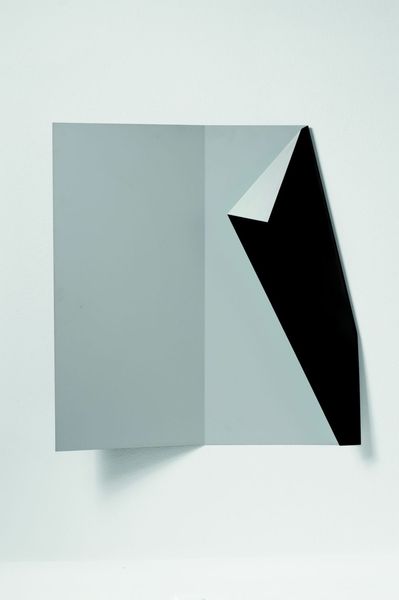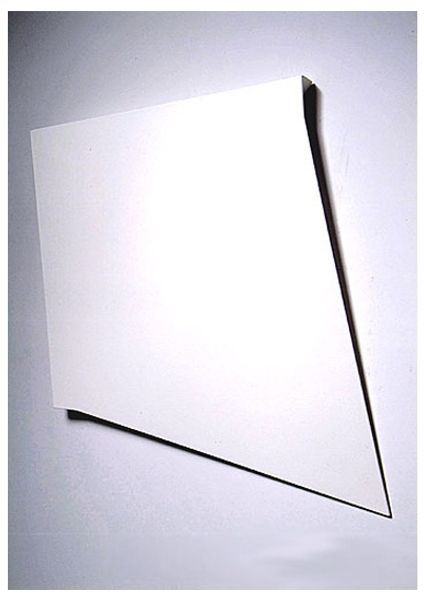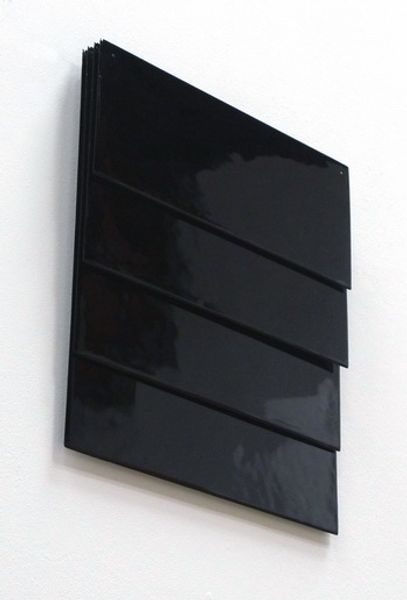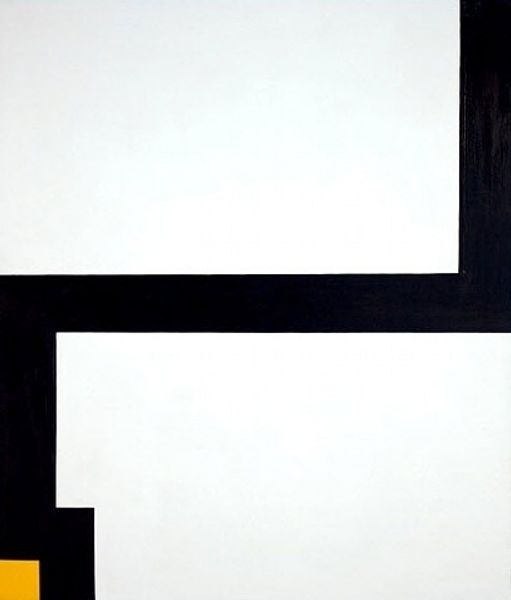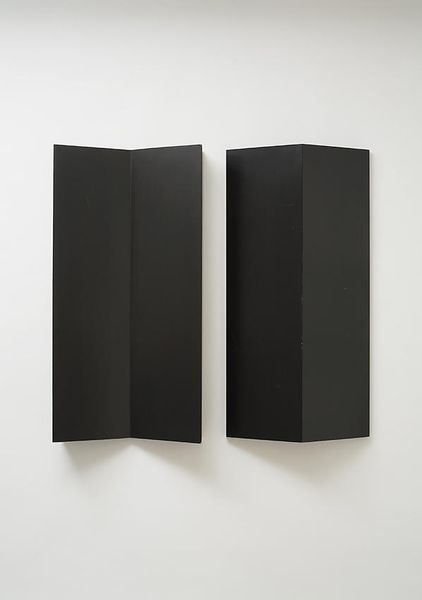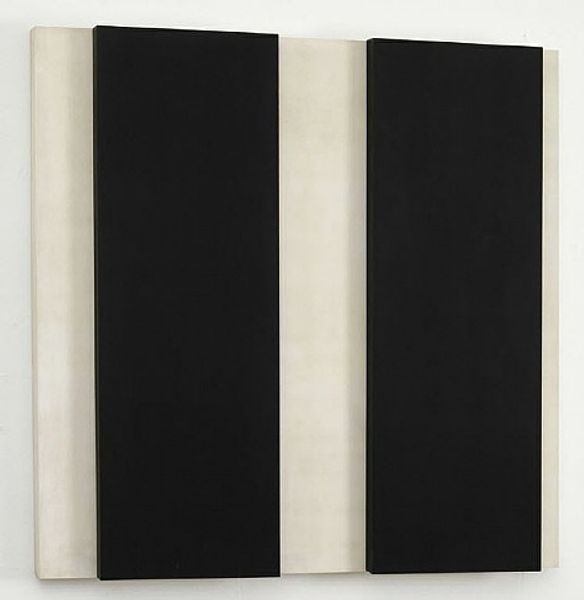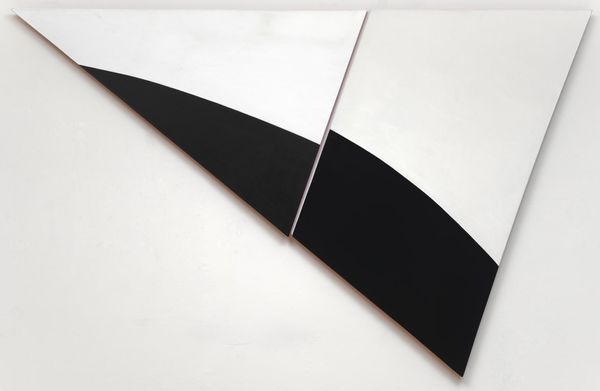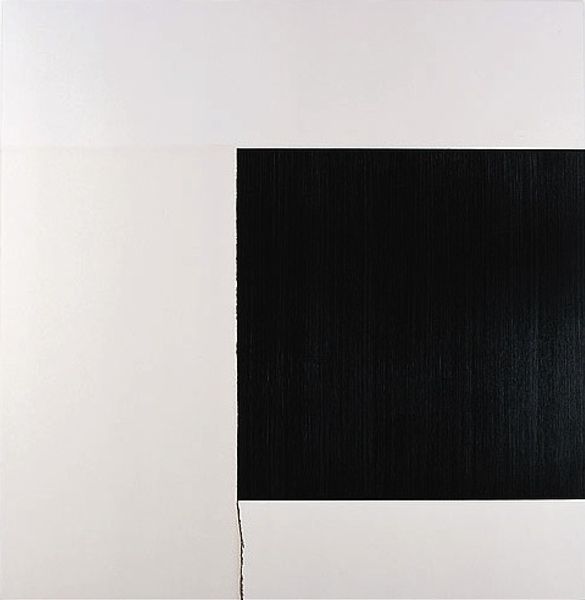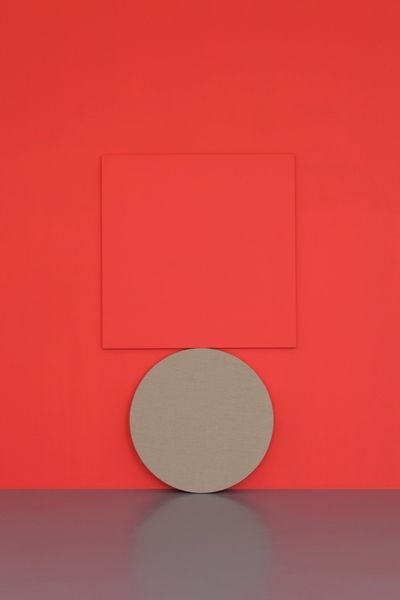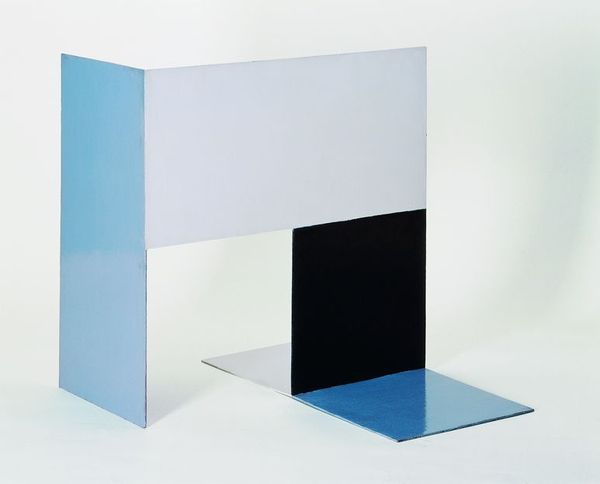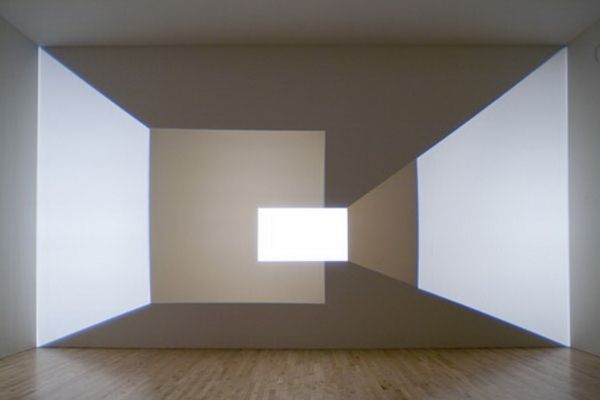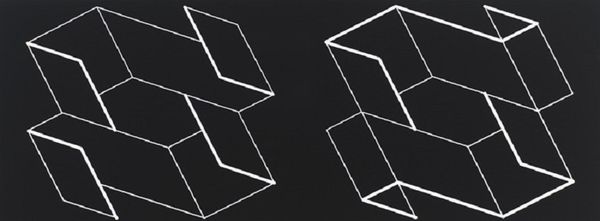
painting, acrylic-paint
#
painting
#
minimalism
#
acrylic-paint
#
form
#
geometric
#
abstraction
#
line
#
hard-edge-painting
Copyright: (c) Ellsworth Kelly, all rights reserved
Curator: I find this 1988 piece by Ellsworth Kelly, titled "White Black," deceptively simple, an almost stark expression using acrylic paint on canvas. What's your initial take on it? Editor: Stark is the word, yes. It strikes me as an essay in contrasts. The black square pushing in, challenging the dominance of that large white form... there’s almost a visual tension, a silent argument between them. Curator: Interesting you pick up on tension. Kelly’s known for his hard-edge painting, aiming for pure form, but it's more complex than meets the eye. Black and white aren’t just colours, they're symbolic weights. In many Western traditions, white represents purity, while black can signify the unknown or even mourning. Does that interplay resonate here, perhaps subverting or reinforcing those meanings? Editor: Certainly. That binary also plays into societal structures. Think about black-and-white narratives in history and culture, how power dynamics often get distilled into such simplistic opposing forces. Is Kelly commenting on that, perhaps subtly acknowledging how reductive such thinking can be through these essential forms? Curator: I wonder if "commenting" is too strong. I feel that Kelly’s commitment was less about direct socio-political statements and more on exploring how these shapes affect our perception. He wanted to achieve a directness of experience, almost a visual haiku where form and colour speak for themselves. It’s as much about how *we* interpret that dialogue, filtered through our cultural lens. Editor: Perhaps. But Kelly lived through considerable social upheaval, didn't he? The Cold War, the Civil Rights movement... can art truly exist in a vacuum, divorced from the context in which it's made and received? Even an absence of explicit narrative can be a kind of statement, particularly in times of societal polarization. Curator: That's a fair point. Ultimately, the power of pieces like "White Black" rests in that open-endedness, the space it creates for continuous discussion, and for each viewer to project their individual experiences onto it. Editor: A canvas that is so clear may reflect all our projections? Very telling of what any age finds important... Curator: Indeed. A poignant example of that possibility.
Comments
No comments
Be the first to comment and join the conversation on the ultimate creative platform.
